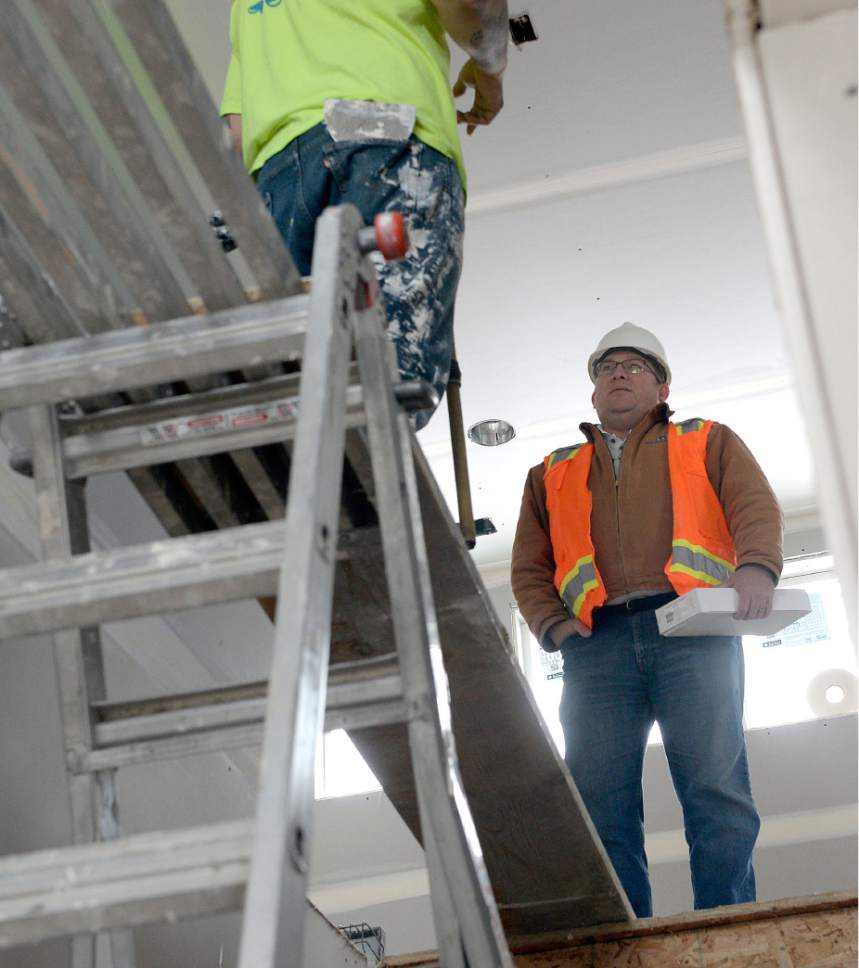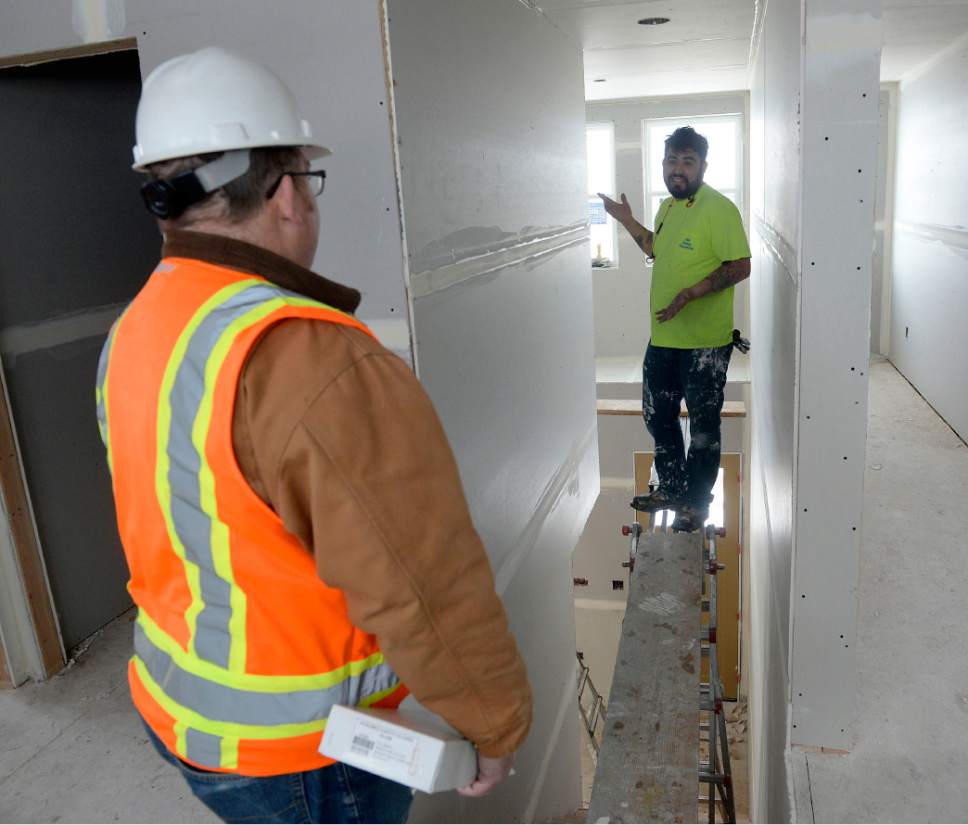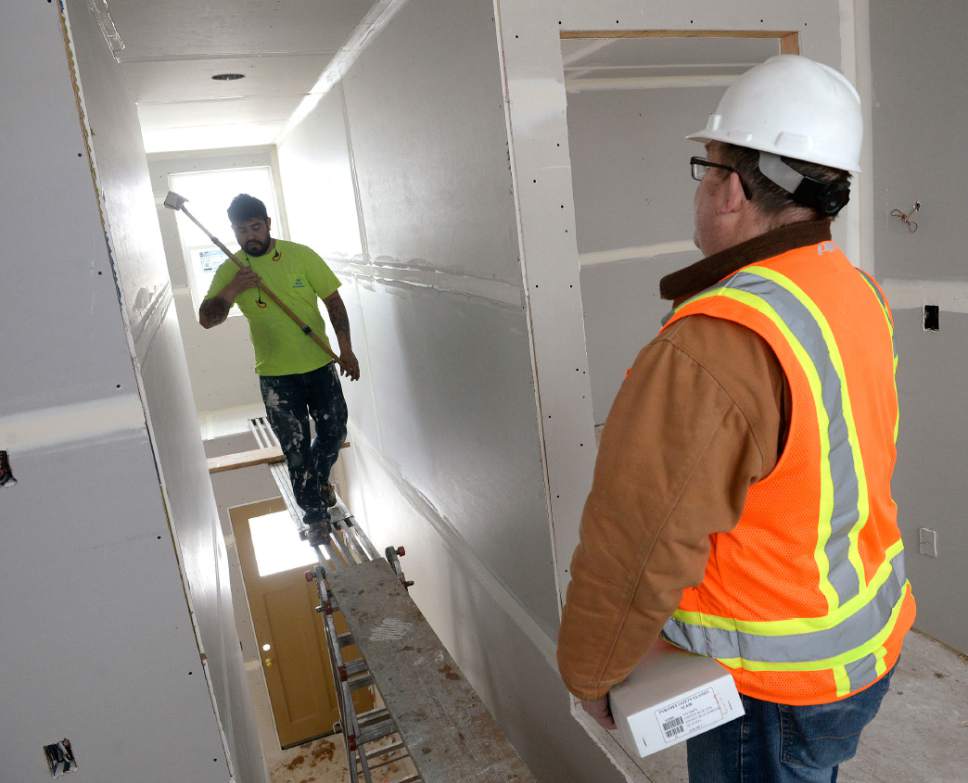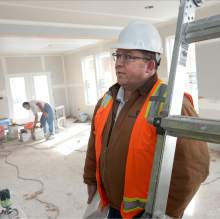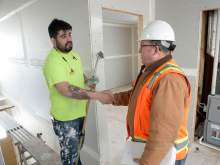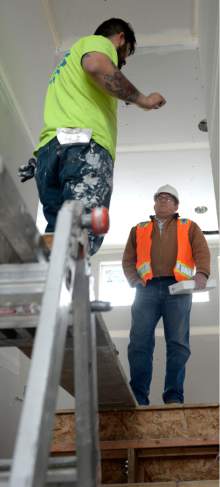This is an archived article that was published on sltrib.com in 2017, and information in the article may be outdated. It is provided only for personal research purposes and may not be reprinted.
Editor's note • The following story was researched and reported by The Utah Investigative Journalism Project in partnership with The Salt Lake Tribune.
Hypoxia is a medical term for the condition of electrical failure in the brain's cells from lack of oxygen. It's a peril common to high-altitude pilots or deep-sea divers, who risk passing out and dying due to lack of oxygen circulation.
On July 21, 2009, however, hypoxia claimed the life of an everyday worker, a Riverton City employee who climbed down into a utility access hole in a confined space and asphyxiated. Rescuers found him at the bottom of a ladder, only seven feet from the surface.
Utah's regulators of workplace safety, Utah Occupational Safety and Health, or UOSH, sent investigators to the scene and found nine serious workplace violations by Riverton City.
The fine for all those violations? Zero.
While that may sound like a lapse of judgment, it's actually standard operating procedure. UOSH is one of only a handful of state workplace safety programs in the country that do not fine government agencies for violations — even those resulting in death. It is prohibited from doing so by a 1997 Utah law.
That's only one aspect of how UOSH is different among other such agencies, according to a review of 10 years' worth of citation documents obtained by The Utah Investigative Journalism Project through the state's open-records law.
Utah is among 21 states that run their own workplace health and safety programs with federal financial support, on the condition that these programs meet federal standards. Yet Utah's program has struggled through the years keeping up. In 2010, Utah's was one of only two state-run programs that the federal Occupational Safety and Health Administration (OSHA) suggested was in danger of being taken over because of "significant program deficiencies," especially UOSH's "questionable penalty reduction practices."
The agency has improved since then, but even as recently as 2015, the agency's federal review found UOSH still struggling when it comes to key areas such as proper record-keeping, classifying citations appropriately and inspecting local and state government worksites.
The agency is also quite particular about what records it keeps and what it considers public.
From 2006 to 2016, UOSH investigated 154 fatalities and nine catastrophes that fell under its jurisdiction. Out of those, 15 records from early 2006 have been destroyed, in accordance with statute, but the agency can't track down six other files and can't confirm that they were even investigated — including high-profile catastrophes like the Silver Eagle Refinery explosion of 2009.
UOSH also maintains that if it determined there was no fault by an employer, these records are not available to the public. During the 10-year period examined, UOSH has decided that records of 40 fatality investigations and one catastrophe investigation are not public — even including documents of companies investigated for repeat incidents.
—
Government Oversight • For the past decade, UOSH levied almost $330,000 in fines spread across 257 total violations. But the agency never fined a government agency even when it found violations. In the Riverton City case, 10 violations meant zero fines. But in that same year, a construction company was fined $7,500 for nine violations surrounding an employee killed by a collapsing silo. During the past decade, seven fatalities have happened on government jobs investigated by UOSH, including as recently as 2014, when a Utah Board of Education worker fell off the back of a delivery truck and died. Investigators found two violations but issued no fines.
Chris Hill is the deputy director and general counsel for the Utah Labor Commission and is also UOSH's current acting director. He says that UOSH's decision to not cite government agencies has long been policy written into statute — at least 20 years.
UOSH also has been dinged by federal OSHA for the low dollar amount of its fines — in the blistering 2010 federal review and even as recently as the 2015 review. UOSH disagrees with the federal program over the need for large fines.
"Our mission is to make sure every worker goes home safe," Hill says. "We're not issuing punitive damages on these citations."
UOSH isn't out to make money off businesses. That's why the agency keeps fines low, he said. One tactic UOSH uses is grouping. Instead of issuing a separate fine on each violation, which it could do, it instead groups similar violations together to keep penalties down (inappropriate grouping of violations was another criticism in the federal review).
Hill doesn't believe heftier fines would increase worker safety.
"Personally, I don't think it matters," Hill says. "Some people could see it as better to go the heavy-handed way, but I think we're doing what we're supposed to be doing."
Yet since 2010, worker fatalities in the state have remained nearly unchanged, averaging 13 deaths a year through 2016.
—
Tragedy chronicles • The UOSH records of workplace fatalities present heartbreaking tragedy in black and white simplicity, even in freak accidents like that of a Sandy bakery employee whose clothing got caught in an industrial dough mixer, and the worker was fatally pulled into the machine. There was also the 2014 case of a Clearfield man who fell only a few feet but landed on his drill with the bit piercing his heart and killing him.
More shocking than the random and tragic accidents are the numerous common and preventable ones.
The decade's deadliest category of accident, with 38 fatalities, came from workers who were hit or struck in the head by tools, collapsed walls and objects — easily preventable injuries in many cases, especially with use of hard hats. Likewise, worker falls accounted for 31 fatalities, another easily prevented accident category.
Since well before Hill became UOSH's director, the agency's focus on compliance has been consistent with Utah's larger pro-business regulatory culture. That's why it was not uncommon for companies to face minor penalties even for fatalities.
During the past decade, companies averaged approximately $3,000 in fines for a fatality — if there were multiple violations found — but a single fatal violation wouldn't put a dent in a company's bottom line.
In 2009, a UOSH investigator visited the scene of a fire at a screw factory in Salt Lake County and was told by the company president that machines weren't ever inspected and maintenance wasn't done on them unless they "did not sound right."
As a result, a worker died in a fire caused by a malfunctioning machine. The company was fined $750 for the single violation of not having inspected the machines — ever.
Hill says the state does have certain standards more stringent than the federal OSHA, including requiring Utah businesses to report accidents within eight hours compared to the feds' 24-hour requirement.
Still, UOSH was singled out in its fiscal 2015 review for the poor quality of its reporting of serious and repeat violations. The feds sampled 40 cases and found problems with classification of violations in nine of them, or nearly a quarter of the examples, suggesting a likelihood that serious worksite problems are downgraded in severity or otherwise improperly classified.
Hill acknowledges that UOSH struggled at this time, attributing part of the fault to the fact the agency had just brought on a new batch of compliance investigators who were still learning the ropes. He says things will improve now, that upon the federal OSHA's insistence, the agency has finally written a formal policy book of procedures. The document was completed in January.
Overall, Hill says it's no easy task looking after 1.3 million employees and 92,000 businesses statewide with just 19 compliance investigators.
"It's a daunting job," Hill says.
With so many workplaces and so few UOSH watchdogs, it's exactly why he hopes more businesses would take advantage of free safety consultations offered by the agency.
These give bosses a chance to catch unsafe conditions and practices and be guided into compliance — before an accident happens.
—
Learning the hard way • Brandt Goble, head of the Painters Local 77 Union, has been working and inspecting job sites for 30 years.
Goble visits worksites, handing out free safety glasses as part of a Utah Labor Commission grant, and talking up the union to workers he meets. He's not fluent in Spanish but he knows his soccer leagues well enough to get along easily with the many Latino workers he comes across every day.
On a visit to a residential home site in Riverton, Goble points out numerous safety problems such as workers at unsafe heights without harnesses, and scaffolds without guards. Inside, the foreman of the job deflects blame to his Latino workers.
"Every day, I am like a bird singing about safety and they never listen," the boss says.
Goble says safety mindsets often don't set in until they have to, usually after an accident.
"Nobody thinks it's going to happen to them," he says.
Goble encourages contractors to get educated and take advantage of safety programming offered by UOSH. He wishes basic OSHA classes were mandatory in Utah, as in Nevada, where 10-hour OSHA training is required for construction workers and 30 hours for supervisors.
The Silver State, however, learned the hard way, implementing its mandatory training in 2010 after stories by the Las Vegas Sun exposed unsafe working conditions on the Las Vegas Strip.
Since then, the federal OSHA has commended Nevada for meeting key goals during a five-year project from 2010 to 2015, when the state reduced its work days lost from injured employees by 8 percent and managed to see that 99 percent of workplace hazards were remedied promptly after inspection.
Goble looks at the construction industry as one of shifting values, with safety too often giving way to shortsighted gain.
"In the construction industry, value has been redefined as the lowest cost," he says. "Value is how cheap can you get it."
Unfortunately, cheap and safe don't always go together. At the site of an apartment complex under construction in Orem, Goble runs across a young Latino painter who tells him he landed this job after ditching one in northern Utah, where he and others had to work around dangerous chemicals and the foreman wouldn't spring for ventilator masks.
The worker summed up the hazardous economics of the situation this way, according to Goble: "Good for the boss, bad for me."
— Eric S. Peterson is the founder and a director of The Utah Investigative Journalism Project. He reported and wrote this article for the project, in partnership with The Salt Lake Tribune.


